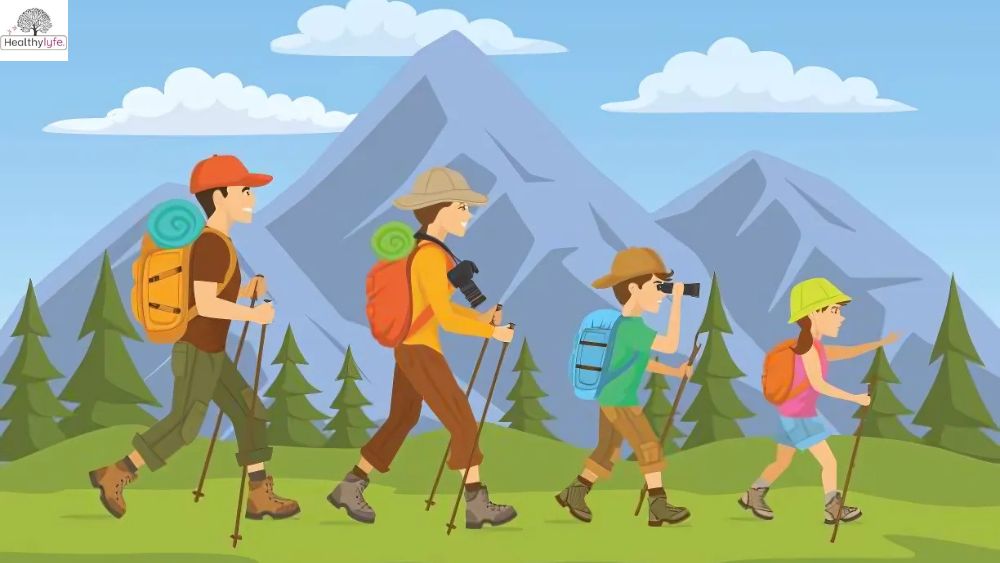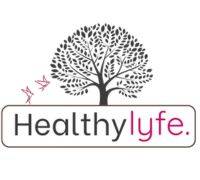Hiking workout is the best full-body workout! Burn calories, build strength, boost endurance, and improve health while exploring nature.
Introduction
Hiking is one of the best full-body workouts that strengthens muscles, improves cardiovascular health, and boosts mental well-being. Unlike traditional gym exercises, hiking engages multiple muscle groups, enhances endurance, and burns calories while allowing you to explore nature. Whether you’re climbing steep trails, walking on uneven terrain, or trekking long distances, hiking provides a low-impact yet highly effective way to build strength, improve balance, and increase flexibility. Additionally, hiking reduces stress, enhances mood, and supports overall wellness. If you’re looking for a natural and adventurous way to stay fit, hiking is the perfect exercise for weight loss, muscle toning, and mental relaxation.
What is Hiking Workout?
A hiking workout is a powerful full-body exercise that involves walking or trekking on natural trails, mountains, or rugged terrain. Unlike traditional workouts, hiking engages multiple muscle groups, improves cardiovascular endurance, and promotes weight loss while offering the added benefit of exploring nature.
Hiking is an excellent cardio workout, helping to strengthen the heart, burn calories, and build leg muscles, core strength, and endurance. The uneven terrain and varying elevations provide natural resistance training, improving balance, flexibility, and overall fitness. Whether you’re hiking uphill for a high-intensity leg workout or trekking long distances for fat burning, this outdoor activity is a highly effective way to stay fit.
Beyond physical health, hiking also enhances mental well-being by reducing stress, improving mood, and increasing focus. The combination of fresh air, scenic views, and physical movement makes it one of the best low-impact yet highly effective workouts.
How to Do Hiking Exercise
Hiking is an excellent full-body workout that boosts cardiovascular health, muscle strength, and endurance while allowing you to enjoy nature. Whether you’re a beginner or an experienced hiker, following the right techniques ensures a safe, effective, and rewarding hiking workout.
1. Choose the Right Trail
- Pick a trail that matches your fitness level—beginners should start with flat, well-marked paths, while advanced hikers can try steep and rugged terrains.
- Use apps like AllTrails or Google Maps to find the best hiking routes.
2. Wear Proper Hiking Gear
- Opt for comfortable, moisture-wicking clothing to stay dry.
- Choose hiking shoes or boots with good traction for stability.
- Wear a hat, sunglasses, and sunscreen for sun protection.
3. Warm Up Before You Start
- Stretch your legs, calves, hamstrings, and back to prevent injury.
- Do light cardio (jumping jacks or brisk walking) for 5–10 minutes to get your heart rate up.
4. Maintain Proper Hiking Form
- Keep a steady pace and use your core muscles for balance.
- Walk with short, controlled steps to avoid slipping on uneven terrain.
- If carrying a backpack, distribute weight evenly to prevent back strain.
5. Use Trekking Poles for Support (Optional)
- Trekking poles help reduce knee strain, improve balance, and provide extra support on steep climbs.
6. Stay Hydrated & Fueled
- Carry a hydration pack or water bottle to stay hydrated.
- Bring high-energy snacks like nuts, protein bars, or dried fruit for sustained energy.
7. Pace Yourself & Take Breaks
- Adjust your speed based on the trail’s difficulty and your stamina.
- Take short breaks to rest and enjoy the scenery.
8. Cool Down & Stretch After Hiking
- Perform post-hike stretches for your legs, back, and shoulders.
- Hydrate and eat a protein-rich meal to aid muscle recovery
Benefits of Hiking Exercise
Hiking is more than just a recreational activity—it’s one of the most effective full-body workouts that improves both physical and mental health. Whether you’re trekking up a mountain, walking through forests, or exploring scenic trails, hiking engages multiple muscle groups, enhances cardiovascular endurance, and promotes overall well-being. Unlike high-impact workouts, hiking offers a low-stress yet highly effective way to stay fit, burn calories, and build strength.
From weight loss and muscle toning to mental clarity and stress reduction, hiking provides a holistic approach to fitness. Below, we explore the top benefits of hiking exercise and why it should be part of your regular workout routine.
Benefits of Hiking Exercise:

Full-Body Workout
Hiking engages your legs, core, and upper body, making it a natural strength-building workout. Climbing inclines works the glutes, hamstrings, and calves, while navigating uneven terrain improves core stability and balance.
Excellent Cardiovascular Health
Hiking gets your heart rate up, improving cardiovascular endurance and reducing the risk of heart disease, high blood pressure, and stroke. The more challenging the trail, the greater the heart-pumping benefits.
Boosts Weight Loss & Fat Burning
Hiking burns a significant amount of calories—a moderate hike can burn 300–600 calories per hour, depending on intensity. It’s an effective way to lose weight naturally while enjoying the outdoors.
Strengthens Muscles & Bones
The combination of walking, climbing, and carrying a backpack strengthens leg muscles, joints, and bones. Hiking on different terrains also improves bone density, reducing the risk of osteoporosis.
Improves Balance & Coordination
Uneven trails force your core muscles, ankles, and legs to work harder to stabilize your body. Over time, this improves balance, agility, and coordination, reducing the risk of falls or injuries.
Reduces Stress & Boosts Mental Health
Being in nature has been proven to reduce anxiety, depression, and stress levels. The combination of fresh air, natural surroundings, and physical movement boosts endorphins and serotonin, enhancing mood and mental clarity.
Increases Endurance & Stamina
Long hikes improve lung capacity, heart efficiency, and muscular endurance, helping you stay active for longer periods. This makes hiking an excellent cross-training workout for athletes.
Strengthens the Immune System
Exposure to nature and fresh air boosts your immune system, helping the body fight off illnesses and improve overall health. Studies show that spending time outdoors reduces inflammation and strengthens immunity.
Social & Emotional Well-Being
Hiking can be a solo adventure or a group activity, promoting social connections and strengthening relationships. It also fosters a sense of achievement and confidence as you conquer challenging trails.
Cost-Effective & Accessible
Unlike gym memberships or fitness classes, hiking is free and accessible to everyone. All you need is a good pair of hiking shoes and a willingness to explore!
Diet Plan for Hiking Exercise [1]
Hiking is a physically demanding activity that requires strength, stamina, and proper nutrition. Eating the right foods before, during, and after your hike can boost energy, improve endurance, and speed up recovery. A well-balanced hiking diet includes carbohydrates for fuel, proteins for muscle repair, and healthy fats for sustained energy.
Below is a hiking diet plan to help you stay energized and hydrated on the trails.
Hiking Diet Plan for Energy & Endurance:
| Meal | What to Eat | Benefits |
|---|---|---|
| Before Hiking (1-2 Hours Before) | – Oatmeal with nuts & fruits – Whole-grain toast with peanut butter – Greek yogurt with granola – Banana with almonds | Provides slow-releasing energy and prevents fatigue. |
| During Hiking (Snacks) | – Trail mix (nuts, seeds, dried fruits) – Energy bars or protein bars – Fresh fruits (apples, oranges, bananas) – Whole-grain crackers with cheese | Keeps energy levels stable and prevents muscle cramps. |
| During Hiking (Hydration) | – Water (500ml per hour) – Electrolyte drinks (coconut water, sports drinks) – Herbal tea (for colder hikes) | Prevents dehydration and replenishes lost electrolytes. |
| After Hiking (Recovery Meal) | – Grilled chicken with quinoa & veggies – Salmon with brown rice & spinach – Protein smoothie with banana & whey protein – Cottage cheese with berries & honey | Helps muscle recovery, reduces soreness, and restores energy. |
Bonus Nutrition Tips for Hikers
Carb-Load the Night Before – Eat complex carbs like brown rice, quinoa, or whole wheat pasta to store energy.
Stay Hydrated – Drink water consistently before, during, and after your hike.
Pack Lightweight, High-Energy Foods – Choose nuts, dried fruits, and protein bars for quick fuel.
Avoid Heavy or Greasy Foods – These can cause digestive issues and slow you down on the trail.
Tips for Success in Hiking Exercise
Hiking is an incredible way to stay fit, build endurance, and enjoy nature, but proper preparation is key to making the most of your experience. Whether you’re a beginner or an experienced hiker, following the right strategies can help you hike longer, stay safe, and improve your overall performance. From choosing the right gear to staying hydrated and pacing yourself, small adjustments can make a big difference in your hiking success.
Tips for Success in Hiking Exercise:
1. Choose the Right Trail
- Start with easy, well-marked trails if you’re a beginner.
- Gradually increase difficulty as your strength and endurance improve.
- Use hiking apps like AllTrails or Google Maps to plan your route.
2. Wear Proper Hiking Gear
- Invest in high-quality hiking shoes or boots for grip and comfort.
- Wear moisture-wicking clothing to stay dry and comfortable.
- Use trekking poles for better balance and knee support on steep terrain.
3. Stay Hydrated & Eat Right
- Drink at least 500ml of water per hour while hiking.
- Eat carb-rich snacks (nuts, fruits, protein bars) to maintain energy.
- Avoid heavy, greasy foods that may cause fatigue or discomfort.
4. Maintain Proper Hiking Form
- Keep a steady pace and take small, controlled steps.
- Engage your core muscles for better balance on uneven trails.
- Use your arms and trekking poles to distribute weight and reduce leg strain.
5. Pace Yourself & Take Breaks
- Avoid starting too fast—slow and steady wins the hike.
- Take short breaks every 30–60 minutes to rest and hydrate.
- Enjoy the scenery and listen to your body to avoid overexertion.
6. Check the Weather & Be Prepared
- Always check the weather forecast before heading out.
- Carry a rain jacket, sunscreen, and extra layers for changing conditions.
- Pack a first aid kit, flashlight, and emergency whistle for safety.
7. Hike with a Friend or Group
- Hiking with others adds safety, motivation, and fun to the experience.
- If hiking alone, let someone know your route and expected return time.
- Carry a fully charged phone and GPS device for navigation.
8. Respect Nature & Leave No Trace
- Follow the “Leave No Trace” principles—pack out all trash.
- Stay on marked trails to protect wildlife and prevent erosion.
- Avoid disturbing plants, animals, or natural landmarks.
Common Mistakes to Avoid in Hiking Exercise
Hiking is a fantastic way to improve physical fitness, relieve stress, and connect with nature. However, many hikers—both beginners and experienced ones—often make mistakes that can lead to discomfort, injury, or an unpleasant experience. Being aware of these mistakes can help you enjoy a safer and more enjoyable hike.
Common Hiking Mistakes and How to Avoid Them
Poor Preparation
One of the biggest mistakes hikers make is not preparing adequately. This includes not researching the trail, ignoring the weather forecast, or failing to pack essential supplies.
How to avoid it: Always check the weather, research the difficulty level of the trail, and carry a map or GPS device to prevent getting lost.
Wearing the Wrong Footwear
Wearing improper shoes, such as sandals or regular sneakers, can lead to blisters, foot pain, or even ankle injuries.
How to avoid it: Invest in a good pair of hiking boots or trail shoes that provide ankle support, grip, and comfort.
Overpacking or Underpacking
Carrying too much weight can make hiking exhausting, while packing too little might leave you unprepared for emergencies.
How to avoid it: Pack light but ensure you bring essentials such as water, snacks, a first-aid kit, a flashlight, and extra clothing layers.
Not Staying Hydrated
Dehydration can cause fatigue, dizziness, and heat-related illnesses, making the hike more difficult and dangerous.
How to avoid it: Bring enough water and drink regularly, even if you don’t feel thirsty. Consider using a hydration pack for convenience.
Ignoring Trail Etiquette
Being loud, leaving trash, or not yielding to other hikers can disrupt the experience for others and harm the environment.
How to avoid it: Follow Leave No Trace principles—stay on designated trails, pack out your trash, and respect wildlife and fellow hikers.
Underestimating the Difficulty Level
Choosing a trail that is too challenging can lead to exhaustion, injuries, or the need for rescue.
How to avoid it: Start with easier trails and gradually work your way up. Know your physical limits and plan accordingly.
Not Dressing Appropriately
Wearing cotton clothing or not layering properly can result in discomfort, overheating, or hypothermia in cold weather.
How to avoid it: Dress in moisture-wicking, breathable fabrics and layer appropriately based on the weather conditions.
Not Carrying a First-Aid Kit
Small injuries like blisters, cuts, or insect bites can become serious if left untreated.
How to avoid it: Always carry a basic first-aid kit with bandages, antiseptic, pain relievers, and any personal medications.
Starting Too Late in the Day
Beginning a hike too late can lead to being stuck in the dark or rushing to finish before sunset.
How to avoid it: Start early to allow enough time to complete the hike and return safely before dark.
Conclusion
Hiking is one of the best full-body workouts, offering a unique combination of cardio, strength training, and mental wellness benefits. Unlike traditional gym exercises, hiking engages multiple muscle groups, improves cardiovascular endurance, burns calories, and enhances flexibility—all while allowing you to connect with nature.
Regular hiking helps build strong legs, core stability, and overall body strength while reducing stress and improving mental clarity. It is a low-impact yet highly effective exercise that supports weight loss, boosts heart health, and enhances overall fitness.
To maximize the benefits of hiking, ensure proper preparation by wearing the right gear, staying hydrated, and choosing trails suited to your fitness level. Whether you’re a beginner or an experienced hiker, this outdoor activity is an excellent way to stay fit, explore new landscapes, and improve overall well-being.
FAQs About Hiking Exercise
What is hiking exercise?
Hiking is a form of outdoor exercise that involves walking on trails, hills, or mountains. It is a great way to improve cardiovascular health, strengthen muscles, and enjoy nature.
Is hiking a good workout?
Yes! Hiking is a full-body workout that improves endurance, builds muscle, burns calories, and boosts mental well-being.
What are the benefits of hiking?
Hiking improves cardiovascular health, strengthens muscles, enhances mental well-being, aids in weight loss, and helps reduce stress.
How many calories does hiking burn?
The number of calories burned depends on factors like weight, terrain, and speed. On average, hiking burns 400–700 calories per hour.
What muscles does hiking work?
Hiking primarily works the legs (quadriceps, hamstrings, calves), glutes, core, and even the upper body when using trekking poles.
What gear do I need for hiking?
Essential hiking gear includes comfortable clothing, sturdy hiking boots, a backpack, water, snacks, a map, sunscreen, and a first-aid kit.
How should beginners start hiking?
Beginners should start with easy trails, wear proper footwear, bring enough water, and gradually increase the difficulty of hikes over time.
What is the best time to go hiking?
The best time depends on location and climate, but early morning or late afternoon is ideal to avoid extreme temperatures.
How much water should I drink while hiking?
Drink at least half a liter of water per hour of moderate hiking. Increase intake for strenuous hikes or hot weather conditions.
Can hiking help with weight loss?
Yes! Hiking is an effective cardio workout that burns calories and supports weight loss when combined with a healthy diet.
What is the difference between hiking and trekking?
Hiking refers to walking on well-marked trails for shorter distances, while trekking is a more challenging, multi-day journey through rough terrain.
How do I prevent blisters while hiking?
Wear moisture-wicking socks, well-fitted hiking boots, and use blister-prevention techniques like applying foot powder or using moleskin.
Is hiking safe for all ages?
Yes! Hiking is a great activity for people of all ages, but it’s important to choose trails that match fitness levels and abilities.
How do I prepare for a long hike?
Train with shorter hikes, wear the right gear, pack enough food and water, and plan your route before heading out.
Can I hike alone?
Yes, but it’s important to let someone know your plan, carry a fully charged phone, and stick to well-marked trails for safety.
What should I eat before a hike?
Eat a balanced meal with complex carbohydrates, proteins, and healthy fats, such as oatmeal, nuts, fruits, or eggs.
How do I improve my hiking endurance?
Build endurance by hiking regularly, increasing intensity over time, and incorporating strength and cardio workouts into your routine.
What should I do if I get lost while hiking?
Stay calm, retrace your steps if possible, use a map or GPS, and if needed, stay in place and signal for help.
How do I protect myself from wildlife while hiking?
Stay alert, make noise to avoid surprising animals, keep a safe distance, and store food properly to prevent attracting wildlife.
How do I recover after a long hike?
After a hike, stretch your muscles, stay hydrated, eat a nutritious meal, and rest to allow your body to recover.
Disclaimer: The information provided in this article is for general informational purposes only and is not intended as medical advice. Always consult with a healthcare professional or certified fitness trainer before starting any new exercise.
By healthylyfe


